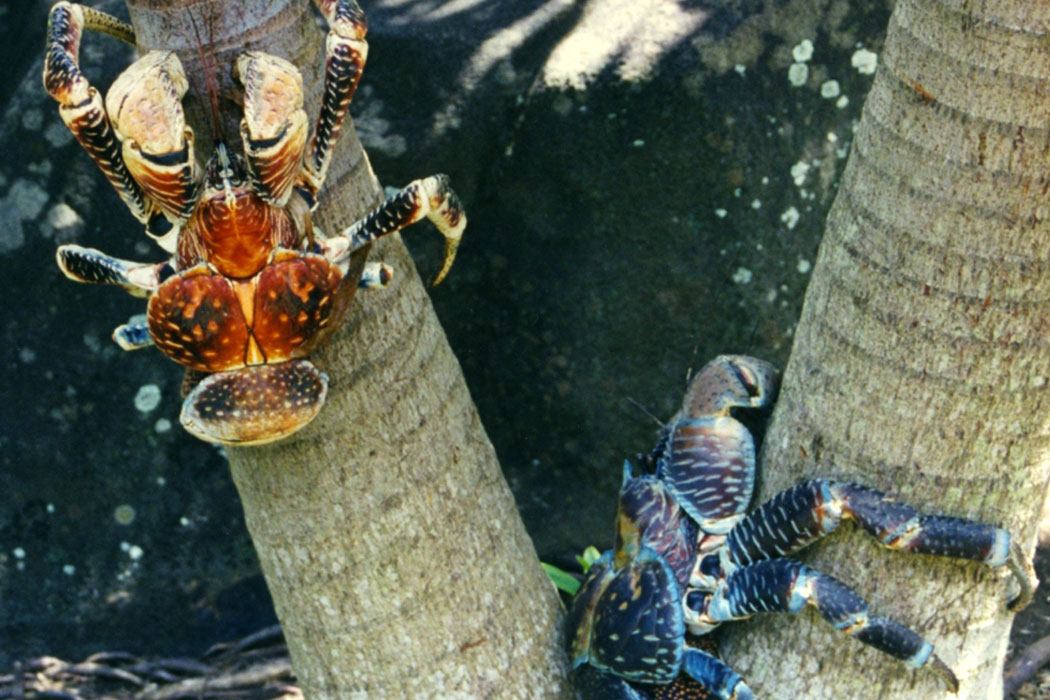Should you find yourself in the rain forests of the Indo-Pacific islands you’ll quickly be overwhelmed by the amazing sights and sounds. If you’re lucky, and not easily startled, you may see a trash-can lid get up and scuttle up a tree. Say what? Meet the coconut crab, the largest terrestrial invertebrate on earth.
Although harmless to humans, coconut crabs (Birgus latro) resemble something out of a science fiction nightmare. They range across the tropical Indian and Pacific Oceans, often inhabiting very rugged terrain. Measuring up to an astounding one meter across and weighing up to 4 kgs, coconut crabs are actually gigantic hermit crabs. Coconut crabs must return to the sea once a year to release their eggs. The larvae drift at sea, eventually coming ashore as juveniles. As juveniles they function like smaller hermit crabs, utilizing discarded shells for protection. As coconut crabs grow, however, unlike most hermit crabs they develop a hard exoskeleton around their abdomens and no longer need to borrow a shell.
They roam distances of up to 500 meters from a home burrow, feeding primarily on seeds and fruits. Despite their name, coconuts are only an occasional part of the diet. They will also take an opportunity to scavenge, eating anything from garbage to giant tortoise carcasses.
The coconut crabs’ terrestrial lifestyle means they have some unique physiological problems to solve. As terrestrial crabs, coconut crabs have air-breathing organs that allow them to spend most of their lives out of water—hold them under water long enough and the crabs will actually drown. Crabs depend on sodium levels to maintain internal water levels, but the seeds they eat contain little sodium. Living inland in forests, the crabs rely on freshwater to drink. They solve the problem, at least on Christmas Island, by eating smaller red crabs and obtaining sufficient salt from their flesh. While some red crabs are obtained as roadkill, there is evidence that coconut crabs may also be active predators. There is at least one case of a coconut crab using its powerful claws (pound for pound some of the strongest crushers on Earth) to kill and eat a rat.
Weekly Newsletter
Then there is their well-earned alternate name: robber crabs. Coconut crabs are incorrigible kleptomaniacs. They have been known to steal cutlery, pots and pans, bottles of whiskey, shoes, camp stoves, machetes, wristwatches… the list goes on. The crabs stealthily snatch and drag their booty far into the brush before testing its edibility. It’s a good tactic to avoid being waylaid by a larger and stronger rival. This behavior is great for crabs to make a clean getaway but drives humans nuts.
So, if you find yourself face to face with a nightmarishly large crab, take a moment to appreciate just what a marvel of evolution it is. But maybe secure your valuables, too.







